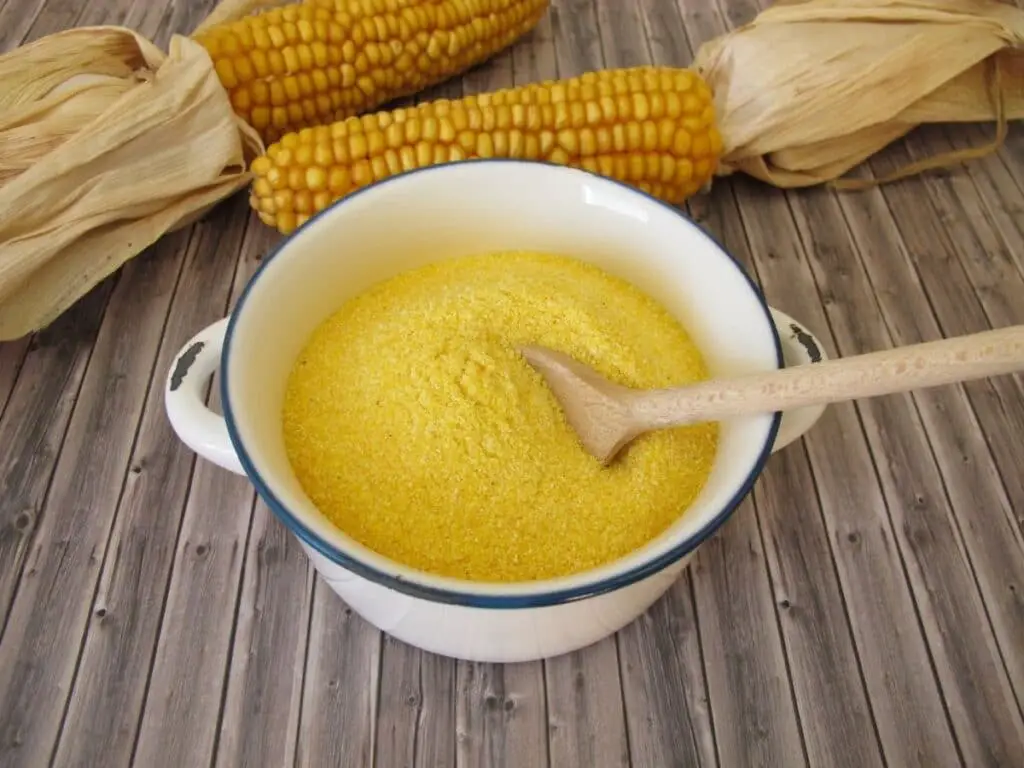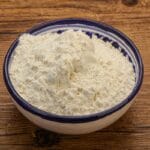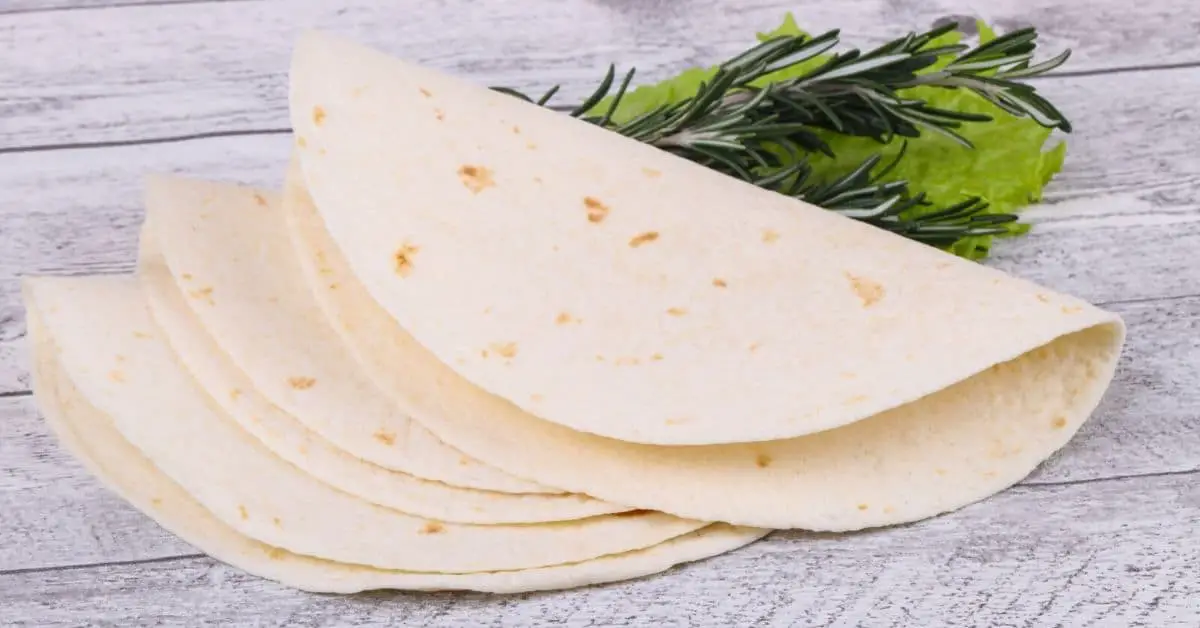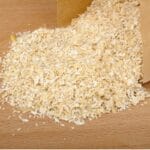Key points:
- For corn-based replacements, you can use corn grits, polenta, masa harina, hominy grits, corn chips, and tortilla chips.
- Non-corn alternatives include semolina, almond meal, coconut flour, wheat flour, oats, ground flaxseed, rice flour, and nuts. Each substitute has its own unique flavor and texture, so choose based on your recipe and dietary needs.
- Grinding substitutes to a similar texture as cornmeal is recommended for better results.
Cornmeal is a versatile ingredient used across the globe for baking, breading, frying, thickening and is also cooked as a side dish. If you don’t have any cornmeal on hand or require a lower carbohydrate replacement, we have a wide range of alternative suggestions for you.
The best substitutes for cornmeal will depend on the type of cornmeal you are replacing, what you are cooking, and your dietary needs. Whether you’re making cornbread, johnnycakes, or tortillas, this guide will help you choose the best cornmeal substitute from your regular pantry staples.
Cornmeal Substitute Categories
There are two categories of substitutes to consider when you need to replace cornmeal. The first category we’ll look at is other corn-based alternatives. These will give you the closest flavor and texture match since they are corn products that include ground corn as the main ingredient. This also means that they are high in carbohydrates.
The second category is non-corn substitutes which will be ideal if you want to eliminate corn in your dish entirely. There are high carb and low carb options in this category.
Best Corn-Based Replacement for Cornmeal
1. Corn Grits
Corn grits are one of the best alternatives to substitute cornmeal. You can use since it is almost the same product, offering an identical flavor. The only difference between cornmeal and grits is that corn grits are less refined, and the grains have a coarser texture.
For the best results, opt for refined yellow corn grits. When replacing white cornmeal, white corn grits will be a closer match, but essentially the only difference between the two is the color. If the color doesn’t matter in your recipe, you can use whichever you have in the pantry.
Since the grain grind is coarser, it will take longer to absorb liquid. To avoid potentially having to adjust the recipe’s liquid ratio, grind the grits in a food processor to produce a finer grind. Ultimately you want a similar texture to cornmeal. This will allow you to use equal quantities as a replacement.
If you aren’t able to grind the grits finer, use a little less in your recipe and give it enough time to cook and absorb the liquid for thickening. Also, note that the coarser texture will yield a heavier product in baking. If you need a light and airy end product, the heavier grain might not be the best alternative.
2. Polenta
Originating in Northern Italy, polenta is similar to grits but has a slightly rougher texture. It is sold as a coarsely ground corn product or is available in a pre-cooked form in a tube. The coarse polenta flour is cooked in salted water. As the grains become soft, a creamy dish develops, which is often flavored with cheese, herbs, or other spices.
The dry product will be your best substitute option for baking, thickening, and coating items for frying. Since the texture is dense, process the grains in a food processor to yield a finer grind. As with grits, aim for a similar texture to that of cornmeal. Replace it in equal amounts. If you don’t refine the coarse texture, you may end up with a heavier or gritty product if not cooked long enough.
Tube polenta can be used as a thickening agent in soups or stews. Make sure to reconstitute it well in the soup or stew liquid so that you do not end up with clumps.
3. Masa Harina
Masa harina, also called masa flour, is used to make tortillas, arepas, and tamales in Latin American cuisine. It is made by soaking maize in limewater (or another alkaline solution) before being cooked, washed, and finely ground. It can be yellow, white, or blue, and since the hull is removed before grinding, the texture is fairly smooth.
Since the flour is gluten-free, it is the perfect ingredient for tortilla-making as it offers a crisp texture without too much rise. It is a good substitute when making corn cakes and thickening soups and chili.
4. Hominy Grits
Masa harina is a product made from hominy. Essentially the alkaline soaked maize is called hominy and is usually available as whole white or light yellow corn kernels. Coarsely ground hominy will give you hominy grits. If you have this in the pantry, it makes an ideal substitute for cornmeal in various dishes.
Grind it down in a processor or blender until it reaches the same texture as cornmeal for baking, thickening, and fried coating items. If you aren’t able to grind the coarse grits, use only ¾ of the amount called for in your recipe to replace cornmeal.
5. Corn Chips and Tortilla Chips
Although corn and tortilla chips aren’t exactly the same, they are both crunchy, crispy snacks that can be used as a substitute, especially for coating fried items such as chicken.
Made from baked and deep-fried tortillas, tortilla chips are generally round or rectangular, thin, and flat. Since tortilla chips undergo the same nixtamalization process as masa harina, which is soaked in an alkaline solution, they have a light corn flavor.
Corn chips are very crispy and come in different shapes. They can be plain or seasoned with flavorings and spices.
Whichever chips you decide to use, grind them in a food processor to get the desired size crumb for coating your items before deep frying.
6. Corn Flakes
Similar to corn chips, corn flakes are best used as a cornmeal substitute for coating fried items. Make sure you use plain cornflakes and not sugar- or honey-coated varieties. Since they have a plain flavor, season your coating mixture with salt and spices.
Crush the cornflakes in a food processor or blender to get a coarse crumb and coat your items before deep-frying for a lovely crispy texture.
7. Corn Flour
Here things may get a little confusing, depending on where you live. In the UK, cornstarch and cornflour are branded as the same item; however, corn starch is not generally a suitable substitute for cornmeal, although it can be used in small amounts to thicken soups and stews.
Cornmeal is coarse, while corn flour is a more finely ground cornmeal version. Corn starch, on the other hand, is made from the endosperm of the corn only, ground into a very fine powder that has a white color.
So, if you have cornflour (not corn starch) in the pantry, you’re good to go with a suitable alternative in your recipe. You will get a finer texture with less grittiness but the same flavor in your dish. It can be used for baking, cornbread, waffles, pancakes, and for thickening.
Best Non-Corn Alternatives to Cornmeal
8. Semolina
If you can’t have corn, semolina is the perfect replacement since it is pretty much the ‘wheat version’ of cornmeal. Semolina made from durum wheat has a light yellow color, while the varieties made from softer common wheat types are beige.
It has a slightly nutty flavor, grainier texture than wheat flour, and is popularly used to make pasta and couscous. Semolina is not gluten-free so if you have a gluten allergy or intolerance, rather go with another alternative.
Use semolina as a straight swap in any application that calls for cornmeal.
9. Almond Meal
Almond meal is made by grinding raw almonds with the skin still on, while almond flour is finer since the skin is removed before grinding. Both can be used as a cornmeal replacement, although almond meals will probably give you a coarser texture similar to cornmeal.
Its neutral nutty flavor makes it suitable for use in sweet and savory dishes, and since it contains no gluten like corn, it can be substituted in almost any application measure for measure. It is high in protein and low in carbs making it paleo and keto-friendly.
If you only have whole raw or slivered almonds at home, you can make your own almond meal and almond flour by pulsing them to a coarse powder consistency in a blender or food processor.
Related: Almond flour alternative
10. Coconut Flour
Coconut flour can be used as a replacement in cornbread and for coating deep-fried items. If you decide to use it as a thickener, keep in mind that it is very absorbent, so you will only need to use a small amount.
Coconut flour is gluten and grain-free, low-carb, and keto-friendly. Since it has a strong coconut taste, it can end up changing the flavor of your dish, especially in something like cornbread where a significant amount is used.
11. Wheat Flour
If you aren’t wheat or gluten intolerant, you probably have typical wheat flour in the pantry. It is an easy substitute for cornmeal in most applications. It can be used for thickening, coating, baking, and pizza.
Fiber-rich wholewheat flour is a more suitable option since it has a coarser texture than wheat flour. However, both whole wheat and refined wheat flour will work just fine.
To get the best results, replace cornmeal in equal quantities with wheat flour by weight instead of by volume.
Related: Substitutions for wheat flour
12. Oats
If you are cooking cornmeal as a porridge, whole oats are an ideal replacement. It is also lighter in carbs and has more protein. You can grind oats into a finer flour texture and use it as a substitute in baking recipes, shallow-fried cakes, as well as for coating deep-fried goods.
Keep in mind that whole or ground oats may contain gluten and may be processed in a factory that manufactures other gluten grains. If you need a gluten-free option, ensure that the oats you have are certified gluten-free products.
Related: Oat bran replacement
13. Ground Flaxseed
Flaxseed is small dark brown seeds with a deep earthy flavor. You can purchase the seeds pre-ground as flour or grind them yourself in a coffee or spice grinder. To obtain the best nutritional value, it is best to grind them yourself just before using them.
The ground seeds have a slightly grainy texture and may change the flavor and color of your dish slightly. For this reason, it is best to use ground flaxseed in applications where only a small amount of cornflour is needed or as a thickener for soups and stews.
14. Rice Flour
Ground white rice yields a very fine white powder with a neutral flavor. When used as a coating for deep-fried items it offers a delicious crispy outer crust. The flour is very dense when used in baking recipes, so it is best used as a substitute for thickening or coating fried foods.
To use it as a thickener, mix it with a little water or liquid from your soup or stew and make a slurry. Ensure there are no lumps and pour the slurry into the pot of hot liquid, stirring well and simmering until thickened. Rice flour is free of gluten, making it allergy-friendly.
15. Nuts
If you have raw nuts such as almonds, pecans, or hazelnuts in the pantry, they make a great alternative to add into batters or use as a coating for fried items. Pulse the nuts in a food processor to get a coarse flour-type texture. Since they are gluten-free, they are a good choice for people with any gluten or wheat allergies.
Types of Cornmeal
Cornmeal is mostly made from field corn as opposed to sweet corn and involves grinding dried white, yellow, or sometimes blue corn into fine, medium, or coarse granules. The fiber-rich bran and germ are removed during milling to offer a smoother product and increase the shelf life.
Stone-ground or whole-grain cornmeal generally has a higher nutrient content, and a richer flavor as some of the hull and germ are retained.
The most common types of cornmeal include steel-ground yellow cornmeal, which is widely used in the United States, and white cornmeal, also known as mielie-meal, which is more common in Africa. White cornmeal is also the type used to make cornbread in the Southern United States. Blue cornmeal has a sweet taste and is ground from dried whole blue corn to a fine or medium texture.
White and yellow cornmeal is used in baked cornbread, coatings for deep-fried items such as fish and chicken, as well as making tortillas. It forms a base ingredient for Johnnycakes, corn fritters, hushpuppies and can also be cooked up as a side dish or porridge. It is included as a thickener in chili and even soups or stews.
FAQ
Semolina flour doesn’t offer the same flavor but is a great alternative for dusting straight on the pizza crust. It has a less gritty texture, and you’ll only need a small amount.
Bread crumbs are great to use as a coating, breading, or binder but are not a good alternative choice for thickening or baking bread or cake.
The very fine white corn starch powder is an effective thickening agent. It can also be used as a coating for deep-fried items. Make a slurry with a little cold water and cornstarch before adding it to your soup or stew for thickening to avoid lumps. For any other purposes such as cakes, bread, or other baking, corn starch is not suitable.
Yes, you can substitute cornmeal with plain flour in some recipes, but the texture and flavor may differ. Cornmeal adds a distinct corn flavor and a slightly gritty texture, while plain flour will make the dish softer and milder in taste. The substitution may work well in certain recipes like breading, but the results may not be the same for others.
Conclusion
Corn meal is a versatile product, and choosing the best cornmeal substitute will depend largely on what you are cooking. For porridge, use oats or grits as your best alternatives, while wheat flour, cornflour, and rice flour are all suitable thickeners. When it comes to breading or coating fried foods, you can opt for almond meals, groundnuts, corn flakes, or tortilla chips.
The most foolproof way to use substitutes with a coarse grain is to grind them to a similar texture to cornmeal in a food processor. With so many alternatives to choose from, there’s no reason to panic when you’re out of cornmeal, just get a little creative and have fun.
Up next: Cornstarch replacement
*image by HeikeRau/depositphotos









